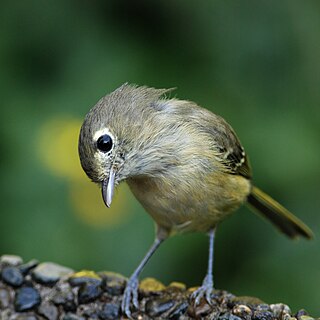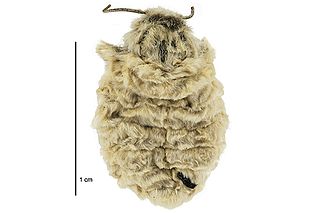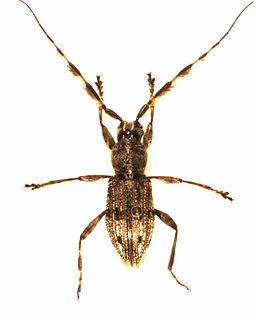
Ginkgoales are a gymnosperm order containing only one extant species: Ginkgo biloba, the ginkgo tree. It is monotypic, within the class Ginkgoopsida, which itself is monotypic within the division Ginkgophyta. The order includes five families, of which only Ginkgoaceae remains extant.
Tropidolaemus huttoni is a little-known species of pit viper, a venomous snake in the subfamily Crotalinae of the family Viperidae. The species is endemic to the southern Western Ghats of India. There are no subspecies that are currently recognized. Little is known about this species, as this species is known only from two young individuals, based on which it was first described in 1949. Despite long-term and targeted herpetological surveys in the particular hill range (Meghamalai), it has never been re-sighted there or elsewhere since then.

The redfin bully is a species of freshwater fish in the family Eleotridae endemic to New Zealand. Being amphidromous, it spends part of its life cycle at sea. Males have distinctive bright red patterns and stripes on their fins. Adults grow to an average of 80–100 mm (3.1–3.9 in) total length, with a maximum of 120 mm (4.7 in).

The New Zealand ruffe, Schedophilus huttoni, is a medusafish of the family Centrolophidae found in all southern oceans south of latitude 18°S, at depths of up to 1,000 m. Its length is up to 90 cm.

Murina is a genus of vesper bats.

Hutton's vireo is a small songbird. It is approximately 5 inches (12–13 cm) in length, dull olive-gray above and below. It has a faint white eye ring and faint white wing bars. It closely resembles a ruby-crowned kinglet, but has a thicker bill and is slightly larger in size. Its most common song is a repeated chu-wee, or a chew, but will have other variations. Its call is a mewing chatter.
Hutton's tube-nosed bat is a species of vesper bat in the family Vespertilionidae. It can be found in the following countries: Bhutan, China, India, Laos, Malaysia, Myanmar, Nepal, Pakistan, Thailand, and Viet Nam. It lives within an elevation of 1450 m to 2500 m. In Southeast Asia, the bat is considered to be uncommon. The bat is known to live in forests, roosting among the leaves of banana trees. Its habitat is threatened by deforestation for firewood and timber, as well as conversion to agricultural land.

Pentarthrum is a genus of beetle in family Curculionidae. It contains about 70 species of mainly tropical distribution.
Ataxocerithium huttoni is a species of medium-sized sea snail, a marine gastropod mollusc in the family Cerithiidae.

Aeneator is a genus of sea snails, marine gastropod molluscs in the family Buccinidae, the true whelks.

Pentarthrum huttoni is a species of wood boring weevil in family Curculionidae. It has a mainly nearctic distribution, but has also been reported from several European countries. It was first reported in Austria in 2006 when it was found to be the cause of disintegration of historically significant 18th century softwood coffins in the crypt of St. Michael's church in the center of Vienna.

Metacrias huttoni is a species of moth in the family Erebidae. This species is endemic to New Zealand where it is known from the eastern areas of the South Island. The female of the species is flightless and buff coloured where as the male is brightly coloured and flies during the day.

Bombyx huttoni, or the chocolate-tipped silk moth, is a moth belonging to the silk moth family, Bombycidae. It is closely related to the domestic silk moth.

Parmenini is a tribe of longhorn beetles of the subfamily Lamiinae.
Neoguraleus huttoni is a species of sea snail, a marine gastropod mollusk in the family Mangeliidae.

Lyperobius huttoni is a New Zealand weevil found in alpine areas of the South Island and at sea level around the Wellington coast. It feeds only on speargrass (Aciphylla). Weevils from the endangered Wellington population have been translocated to predator-free Mana Island.

Lyperobius is a weevil genus in the subfamily Molytinae. Most Lyperobius species live in sub-alpine and alpine grassland, feeding on members of the family Apiaceae. Adults are active by day and feed on flowers, seeds, leaves and stems of the host plant. Larvae are found in the thick roots, rhizomes and soil surrounding the root system. All members of this genus are endemic to New Zealand. With the exception of L. huttoni and L. nesidiotes, all species are only found on the South Island.

Septifer is a genus of saltwater clams, marine bivalve molluscs in the family Mytilidae, the mussels.













